39 graphing scientific data worksheet
Graphing Practice – given data sets, such as video games scores and shirt colors, students create line and bar graphs, activity paired with growing sponge animals while students wait on results Interpreting Graphs and English Usage – simple graph showing tadpoles, this is more of a vocabulary lesson on words used to interpret graphs, such ...
Our graphing worksheets help students of all levels learn to use this tool effectively. Introduce younger students to the basics of collecting and organizing data. Challenge older students to use line plots, create bar graphs, and put their skills in action with word problems in these graphing worksheets!
The data in all cases is already available. You will either be asked to create or analyze a graph from the data. You will learn about bar, line and pie graphs. Additionally, you will learn the meaning and how to use each graph type. These worksheets demonstrate the science-based concept of graphing.
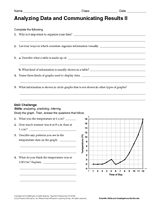
Graphing scientific data worksheet
Graphing and Analyzing Scientific Data Graphing is an important procedure used by scientist to display the data that is collected during a controlled experiment. There are three main types of graphs: Pie/circle graphs: Used to show parts of a whole. Bar graphs: Used to compare amounts.
horizontal axis. For example, if you wanted to graph the height of a ball after you have thrown it, you would put time along the horizontal, or x-axis, and height along the vertical, or y-axis. Line graphs are important in science for several reasons such as: showing specific values of data. If one variable is known, the other can be determined.
Graphs are a useful tool in science. The visual characteristics of a graph make trends in data easy to see. One of the most valuable uses for graphs is to "predict" data that is not measured on the graph. • Extrapolate: extending the graph, along the same slope, above or below measured data. •
Graphing scientific data worksheet.
This *EDITABLE* worksheet has 48 questions related to analyzing data and graphs (line, bar, and pie). This is a great in-class review or homework in any science class. Topics Covered: Data tables, Extrapolating data, Scientific experiments, Drawing conclusions, Dependent and Independent variables, Subjects:
Graphing in science Name: Class: In science, graphs are used to visually display data gained through experimentation. There are a number of different types of graphs, and it is important that you choose the right one to display your data. Although software is available for creating graphs, drawing your own graphs is a useful skill to develop ...
Now, using your data from the table above, construct a bar graph that shows your results. • Label the x-axis with your manipulated variable, and the y-axis with the responding variable. 1
Graphing is an important procedure used by scientist to display the data that is collected during a controlled experiment. There are three main types of graphs: Pie/circle graphs: Used to show parts of a whole. Bar graphs: Used to compare amounts. Line graphs: Use to show the change of one piece of information as it relates to another change. Both bar and line graphs have an “X” axis (horizontal) and a “Y” axis (vertical).
Graphing and Analyzing Scientific Data Graph Worksheet Name: Graphing Science Data Period: _____ Date _____ A. Graph the following information. Label and number the x and y-axis appropriately. Month 1. What is the independent variable? 2. What is the dependent variable? 3. What is an appropriate title? 4.
a Using the data table below, organize the results to show the average particle size and the amount of water that flowed through for each type of soil. Be sure to include column headings, data, and units in the table.

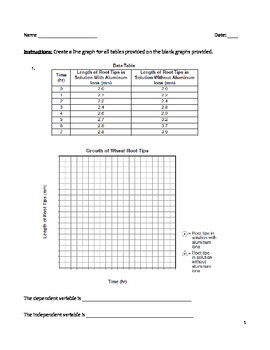
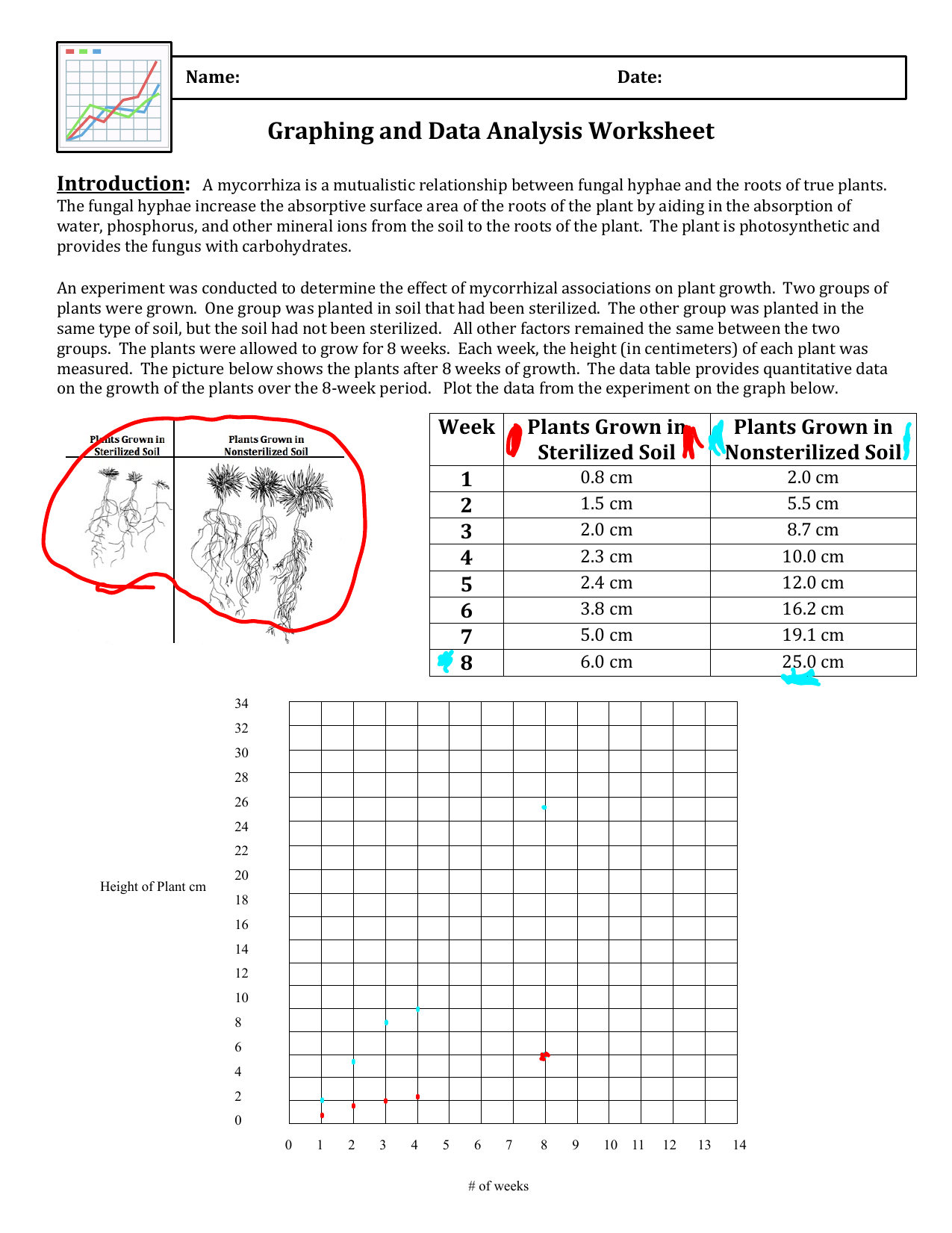
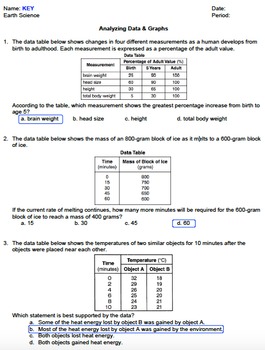


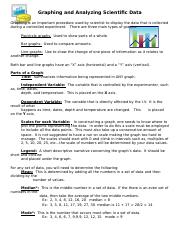



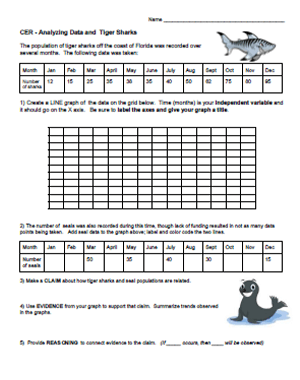
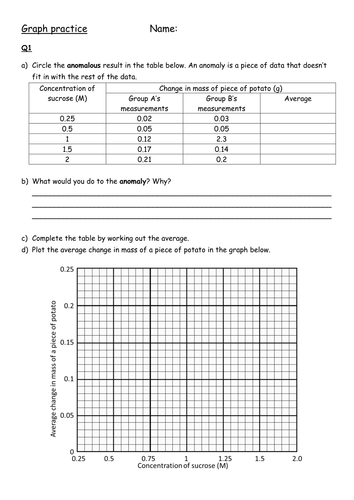
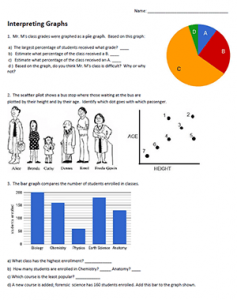



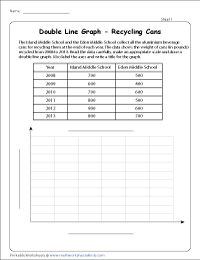



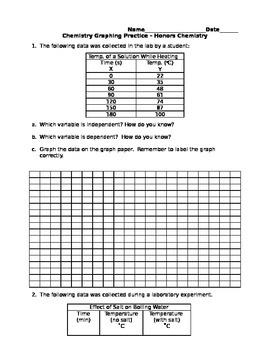

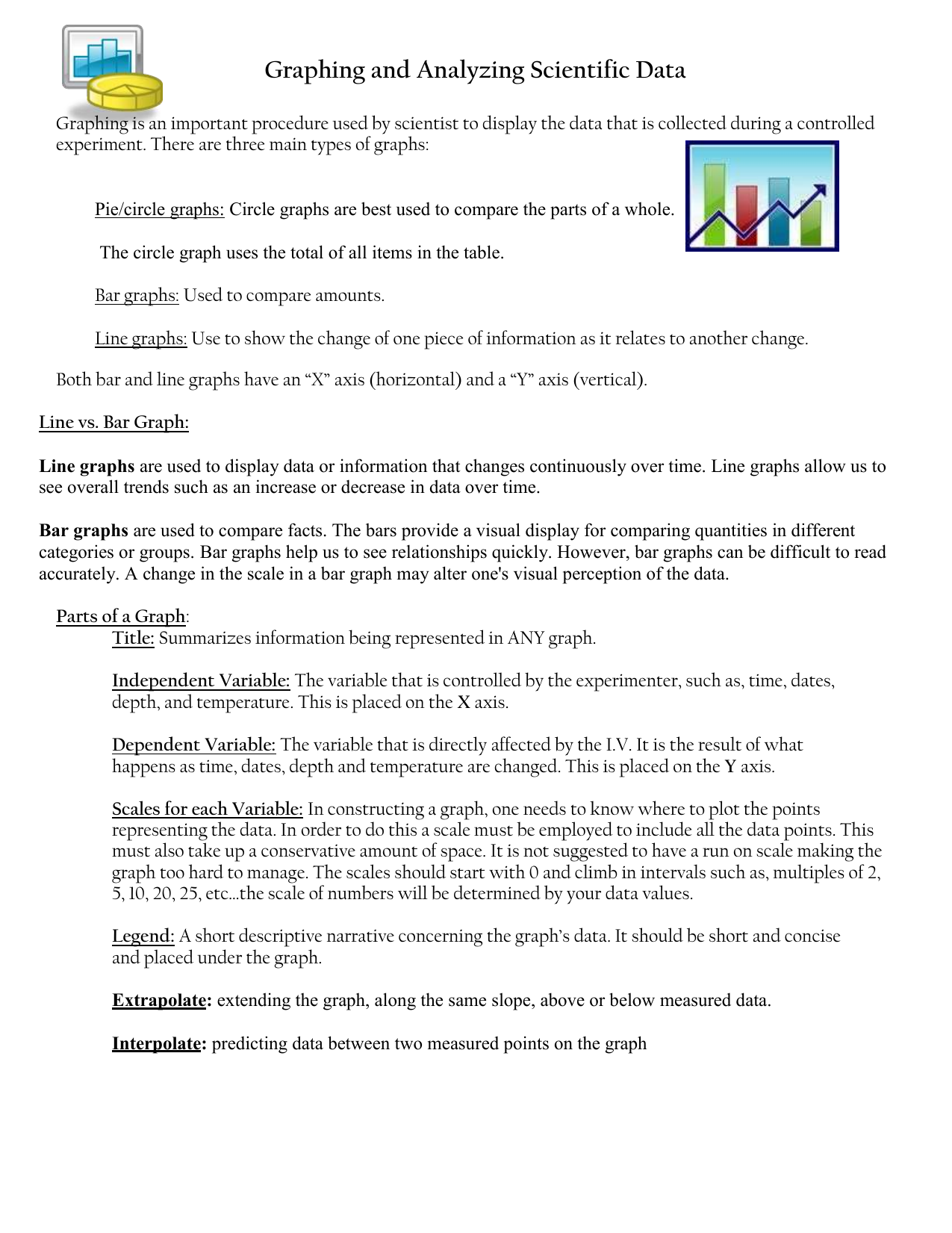

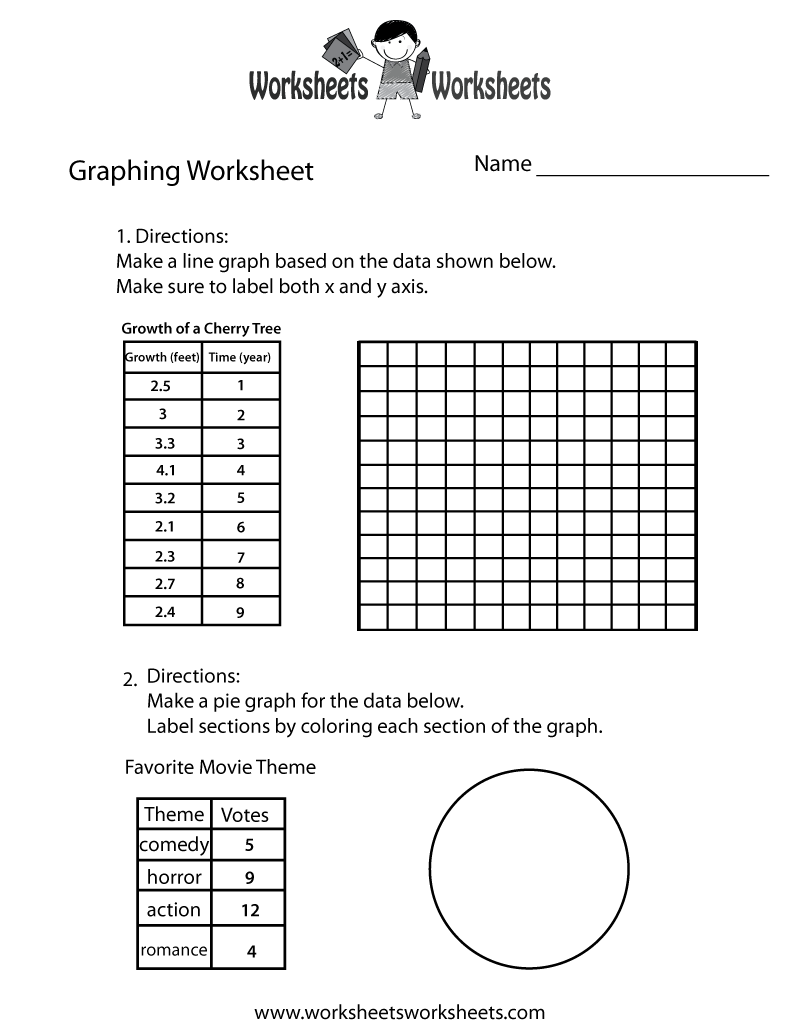
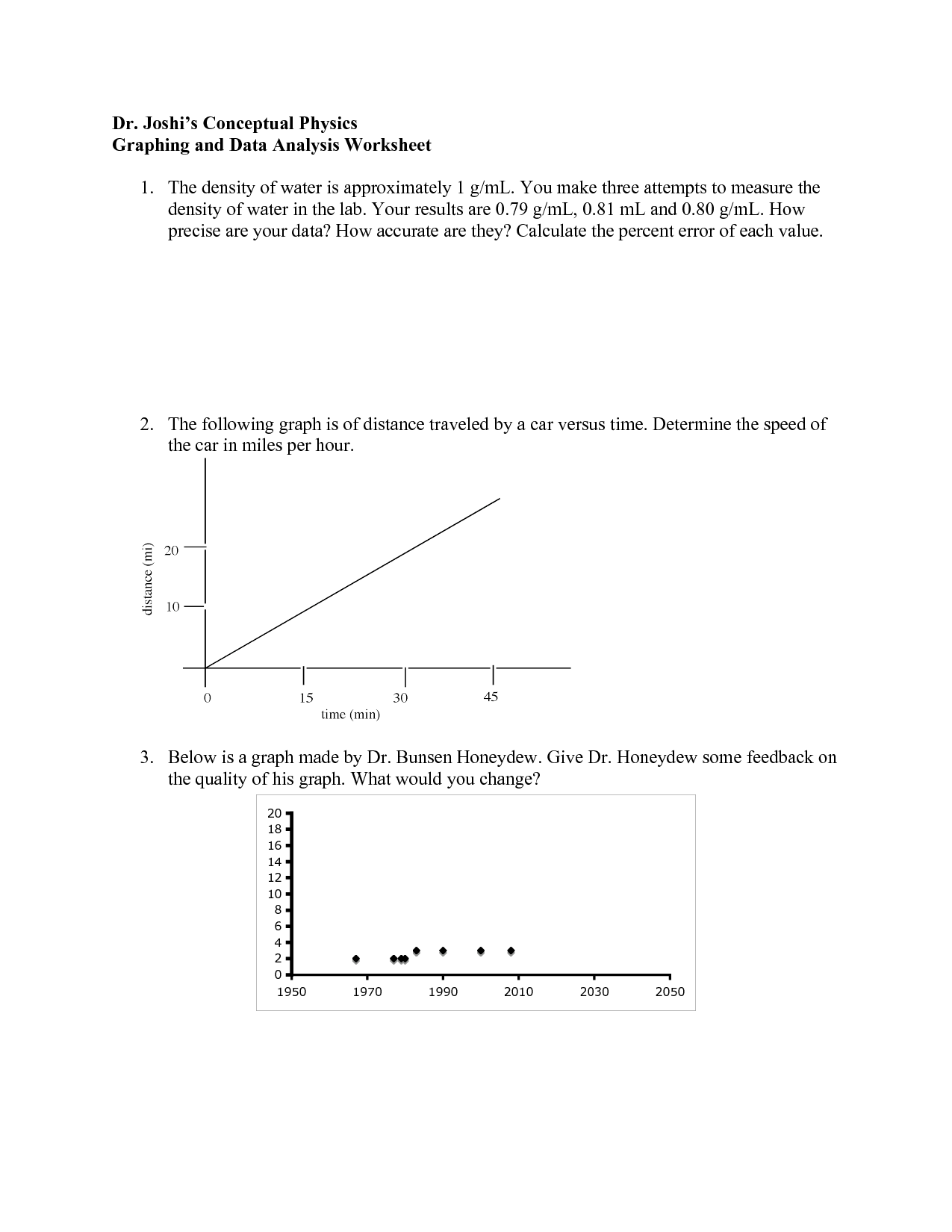


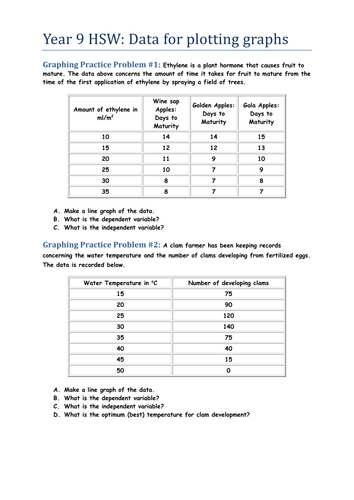





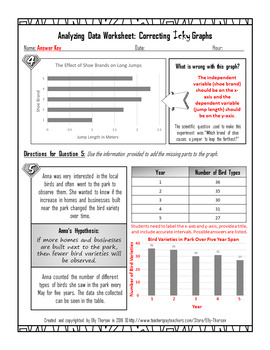


0 Response to "39 graphing scientific data worksheet"
Post a Comment